
What’s a food swap?
I first got interested in food swaps from my sisters in Portland, OR. They are active participants in the food swap by them and sent me the most wonderful picture of stacked goodies that they scored. I didn’t know much about it at the time, only that it was some sort of bartering of homemade goods and I wanted in!
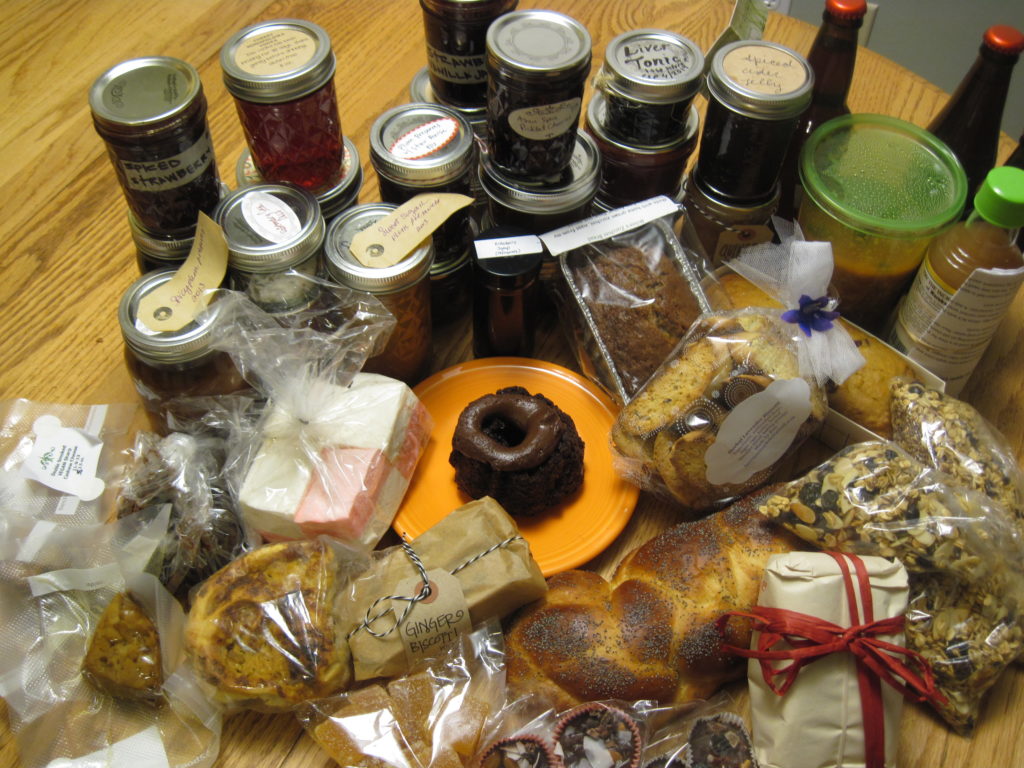
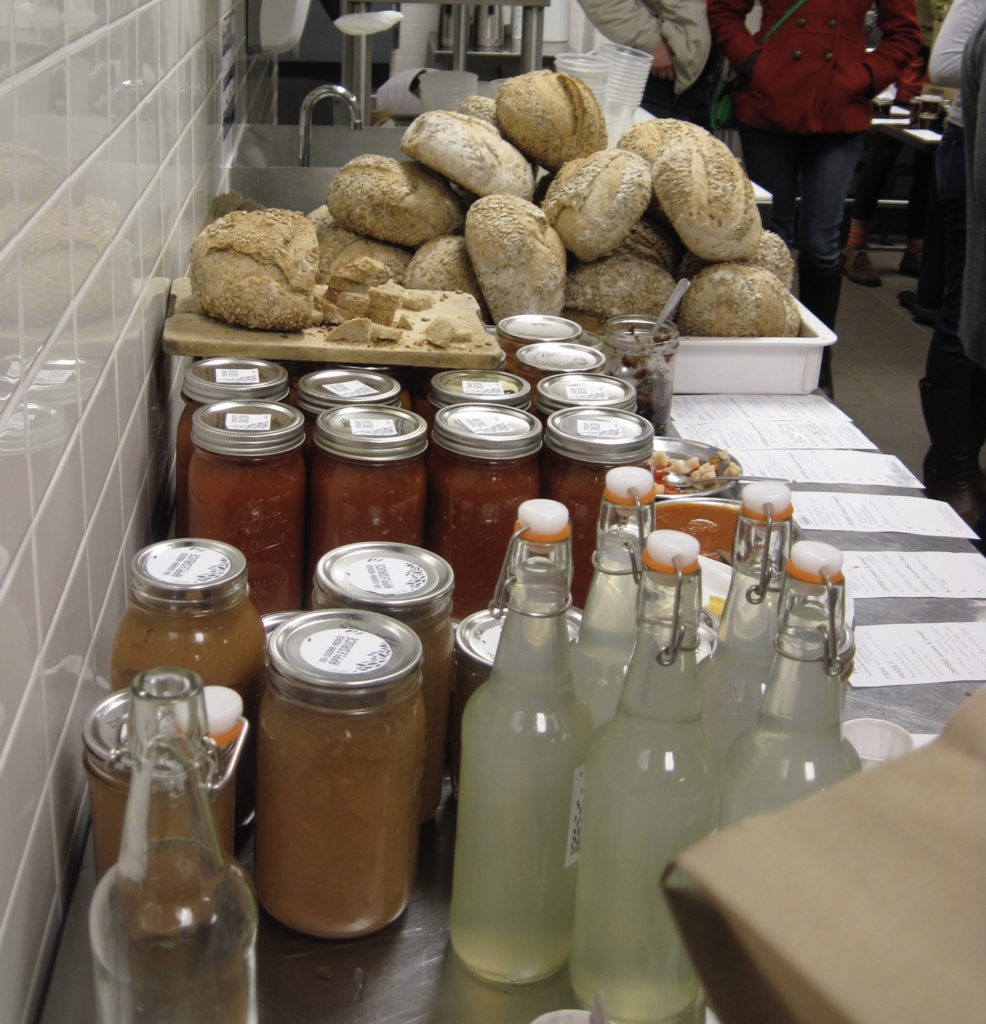
Their involvement piqued my interest, and I decided to investigate if one was happening anywhere near me in Chicago. To my delight, there is an active group of “food-swappers” and one was going to be happening on a date that worked in my schedule. I packed up my homemade strawberry jam and the twins and headed to the north side!
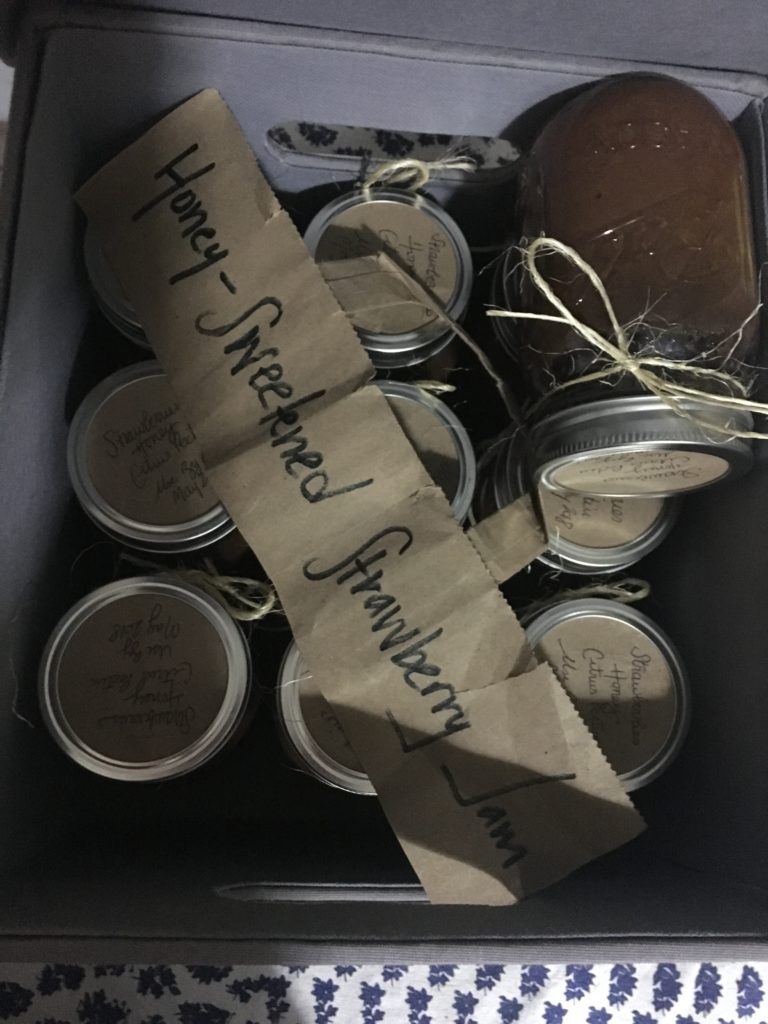
The Chicago food swap was held in a cool old building in Rogers Park, and I found so many wonderful and eclectic goodies to trade my strawberry jam for!
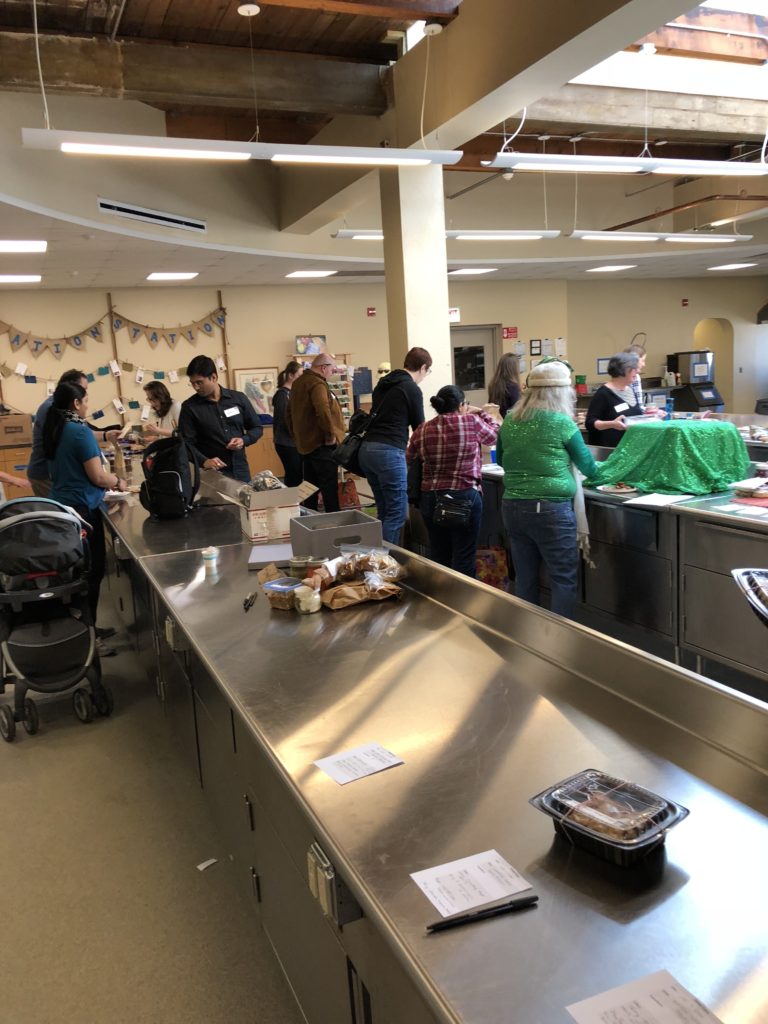
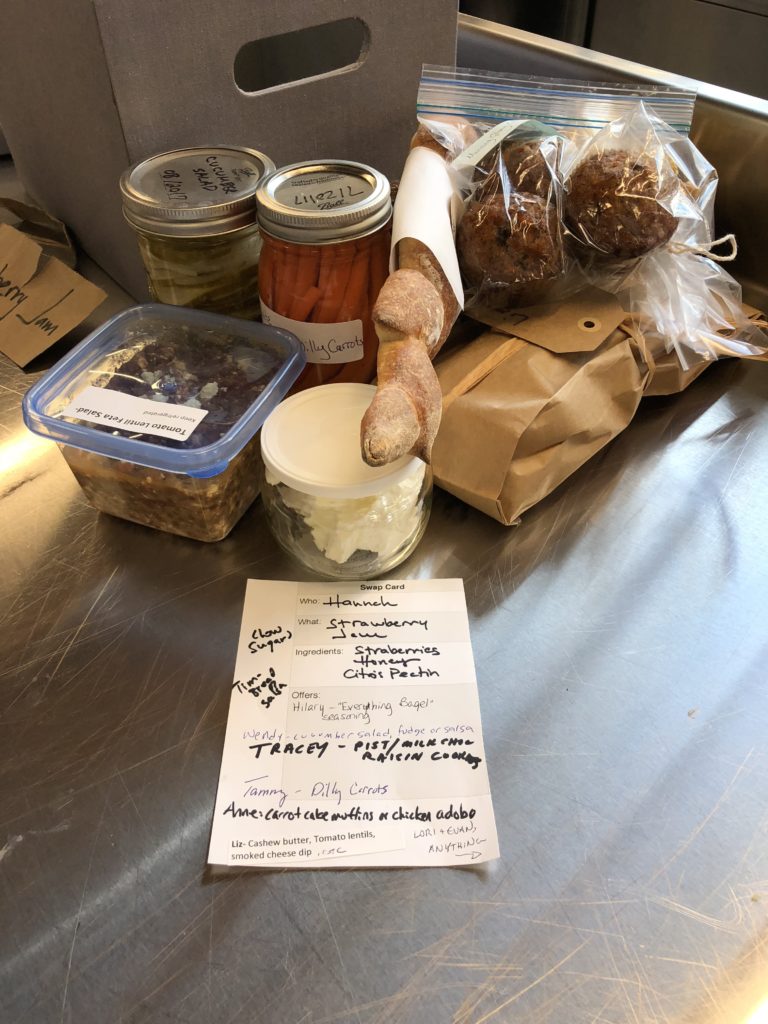
Emily Paster has been coordinating the Chicago food swap since 2011, even writing a cookbook with all kinds of cool facts about food swapping in it. I reached out to her to see if she could tell us a bit more about what food swapping is all about.
What is a food swap?
A food swap is a recurring event where home bakers, cooks, gardeners, and foragers get
together to trade and barter their homemade and homegrown foods. The participants are
all individuals trading items they made or grew or foraged themselves, not businesses.
No money changes hands. All exchanges are my trade and barter only.
How does a food swap work?
The participants arrive and set up their items. For each different item – not multiples of
the same item – a participant fills out a swap card indicating what the item is, the
ingredients and any other important information. There is also a place at the bottom to
make offers. The first part of the swap is spent browsing, sampling – if people have
samples – and making offers. No trading occurs until the organizer announces it is time
to swap. The trades are all negotiated by the individuals themselves. The organizer does
not play a role. Once everyone is done swapping, they pack up and go home with an
armful (or more!) of homemade and homegrown food.
How did you get involved in food swaps?
I read about a food swap that was happening in Philadelphia on my friend Marisa
McClellan’s blog Food in Jars. At the time, I was doing a lot of canning and preserving
and had way more jam and pickles than my family could eat. I thought that a food swap
would be the perfect outlet for my overzealous canning. I tried to find one in Chicago, but
when I realized that Chicago did not have a food swap of its own, I resolved to start one.
With a friend, I started the Chicago Food Swap in 2011. Our first swap was December
2011, so I guess we are coming up on our 7th anniversary! We had so much fun that first
time, we resolved to do it again. The Chicago Food Swap grew from a few dozen
participants to a mailing list of over 1000 people! We have moved around to all parts of
the city and have had as many as 60 or 70 people at one event. These days, we are
meeting in Oak Park once a month and typically have around 20 or 25 swappers.
When did food swaps become a “thing”?
The movement really started in 2010 or 2011. A woman named Kate Payne had the first
food swap in Brooklyn with her friend Megan Paska. Kate made marmalade and Megan
kept bees and had too much honey. They were going to swap just the two of them, but
then they realized that they knew a lot of people who made unique food items and
decided to invite them for a larger group swap. From there, the movement spread to
other cities with outsized food cultures like Portland, OR and Austin, TX.
How often do food swaps happen? Are they in other places outside of Chicago?
There are food swaps all over the country and even in the U.K. In my book Food Swap, I
profile swaps from California to Boston. Some have fizzled out but new ones keep
popping up. My friend Laura Sampson runs a food swap in Palmer, Alaska! Some meet
once a month, others more like once a season. It’s up to the organizers.
Are there stipulations for participating in a food swap?
There are some ground rules. First, as I mentioned, no money changes hands. It is all
trade and barter. Also, the items must have been made or raised or foraged by the
person swapping them. You can’t bring extra vegetables from your CSA. You can bring
vegetables you grow, or you can bring something you made with vegetables you bought.
Your work is the currency at the food swap.
Items should be packaged well to travel. Don’t, for example, show up with a big pot of
soup! Show up with several jars or plastic containers of soup so people can bring it
home.
If you have severe allergies or dietary restrictions, a food swap may not be for you. You
can talk to people and ask questions before agreeing to swap, but unlike restaurants and
supermarkets, there are no requires labels or safety warnings.
Lastly, declining a trade is part of the process. You can say no if you don’t want to trade
with someone and if someone says no to you, do not be offended. There could be any
number of reasons why someone might decline a trade. I have a nut allergy in my family,
for example, so I never trade for any item containing nuts.
What kind of things do people bring to a food swap?
All kinds of things! Baked goods, both sweet and savory. Preserves like jams or pickles,
Candies. Dips, sauces, and condiments. Homemade yogurt. Eggs from backyard
chickens and vegetables from backyard gardens. Soups and salads. Snacks like granola
or trail mix is also popular. My cookbook Food Swap has a lot of ideas and recipes plus
ideas for how to package items for swapping. Some people put as much thought into the
packaging as to the items themselves.